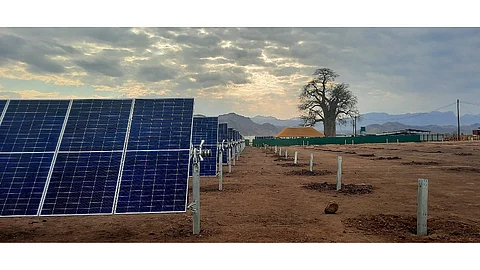

Global solar funding is highly unequal – only 3% of the $2 trillion clean energy investments in 2024 reached Africa
High financing costs block the advancement of solar in emerging economies compared to the wealthier nations
There is a need to reduce the cost of finance from 15% to 5% to boost solar deployment globally
It is also important to divert financing to upstream R&D, recycling, and training, as currently the investment is skewed towards downstream project development
The Global Solar Council (GSC) has released a new position paper with 10 actionable recommendations to boost investment, improve capital flows and expand access to solar, beyond the wealthy regions alone. This is required to close the funding gap between developed and developing nations.
Prepared by the GSC’s Finance Task Force, chaired by JinkoSolar, the paper points out that capital flows to the solar market remain ‘deeply unequal and structurally misaligned.’ Of more than $2 trillion invested in clean energy in 2024, only 3% reached Africa, a region that hosts over 17% of the global population, with several still living off-grid.
Not just Africa, other developing regions such as the Middle East, Latin America and the Caribbean also account for only a marginal share of the global solar investment, according to the report titled How to Finance Solar for All?
To stress the disparity, it explains that countries like Nigeria face equity return expectations as high as 59.7%, compared to 8.3% in Germany. This acts as an impediment to global solar advancement and meeting the 11 TW renewable energy target by 2030.
While it took 68 years to reach the 1 TW milestone, global solar PV installations reached 2 TW by November 2024, taking only 2 years. The world now needs to add another 8 TW by 2030 to help limit global warming to 1.5°C, which is expected to require $1.5 trillion investment/year (see Tripling Renewables By 2030 Requires $1.5 Trillion Investment/Year).
“Finance is absolutely at the core of getting to 8 terawatts of total solar deployment by the end of this decade. As one of the most capex intensive technologies in the world, with all our costs upfront, we are incredibly sensitive to the cost of finance in all 190 countries around the world,” explained GSC CEO and Vice Chair of Global Renewables Alliance, Sonia Dunlop. “It is no accident that the countries that have the highest solar deployment - China, USA, Western Europe - are the countries that have the lowest cost of capital.”
Bringing down the cost of finance to scale up solar deployment to 1 TW/year to fund solar projects around the world will require efforts that lower the cost of finance for a typical project from 15% to 5%. “We need to find ways of de-risking these projects,” adds Dunlop.
Additionally, GSC points out that most of the capital invested is heavily concentrated in downstream project development, whereas capital-intensive upstream R&D, recycling, energy storage, and skills development are underfunded.
Dunlop stressed that this GSC report includes recommendations that will unlock every market around the world, by bringing down the cost of finance for solar projects, large and small, both on grid and off grid. She says, “This is the key to delivering the tripling of renewables, and ultimately, energy access, resilience and a decarbonized electricity system for all.”
The GSC’s 10 key recommendations cover the following 4 major areas:
Capital Reinvigoration
Revive global solar funding through transparent public-private partnerships and strong risk mitigation.
Public investors should lead cross-border solar investment, especially in developing countries.
Commercial banks should enhance their tools and tailor financial products to more effectively support solar projects.
Balanced Investment Across the Value Chain
Adopt fairer standards that reflect capital costs in emerging markets to ensure solar finance equity.
Promote balanced solar investment through better coordination and funding across the full value chain.
Increase focus and funding for solar-plus-storage solutions that can advance solar and integrate more renewables.
Collaboration and Dialogue
Boost solar investment by enhancing collaboration across financiers, industry groups, and manufacturers.
Align global standards by partnering with financial bodies and leveraging frameworks like the EU Taxonomy.
Strengthen ESG by improving disclosure and establishing DFI/MDB intermediaries to accelerate investments and mitigate risks early.
New Application Scenarios
Develop innovative financing for emerging solar uses like data centers, aluminum electrolysis, and agrivoltaics, among others.
The complete GSC position paper is available for free download on its website.
